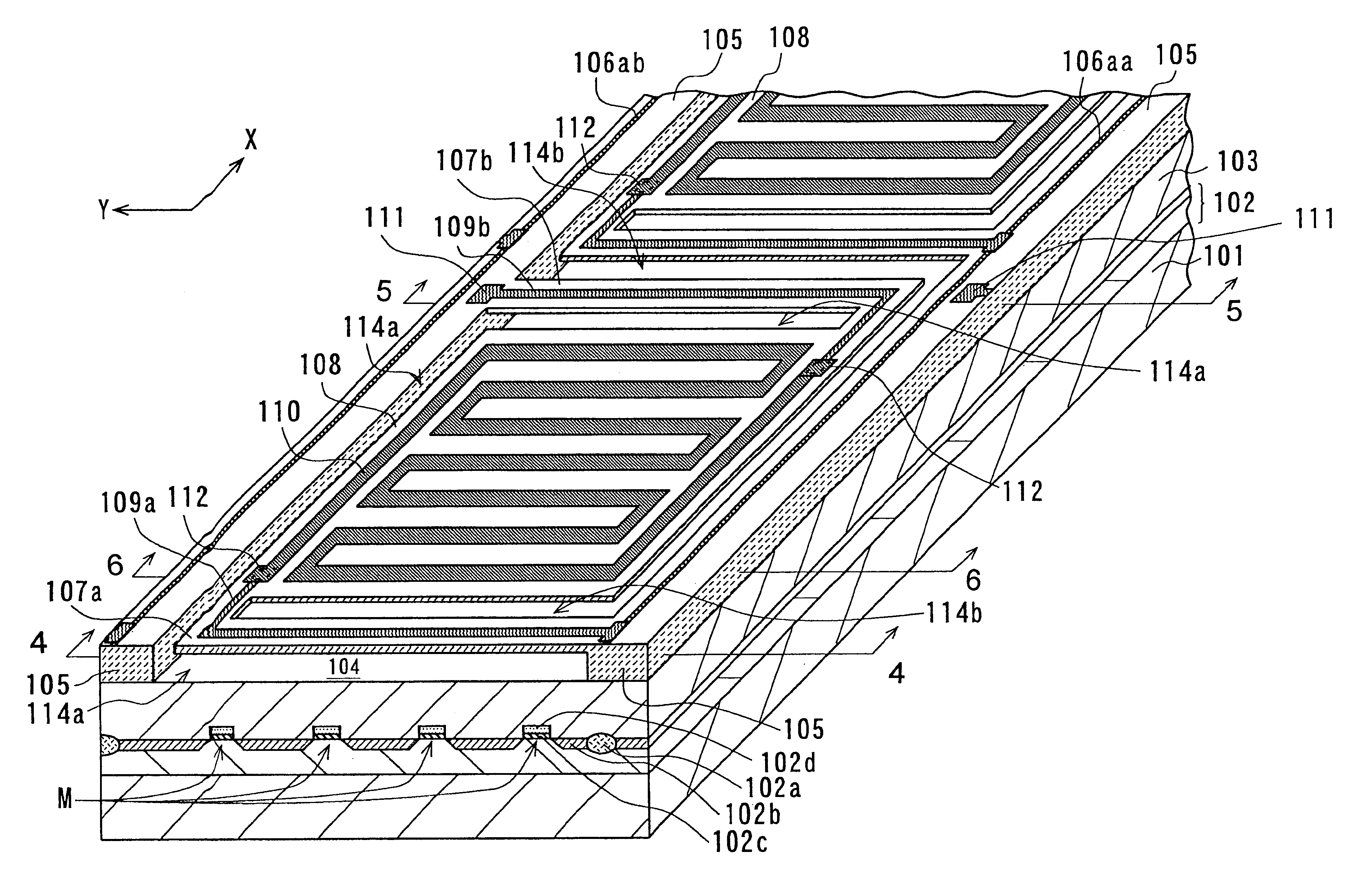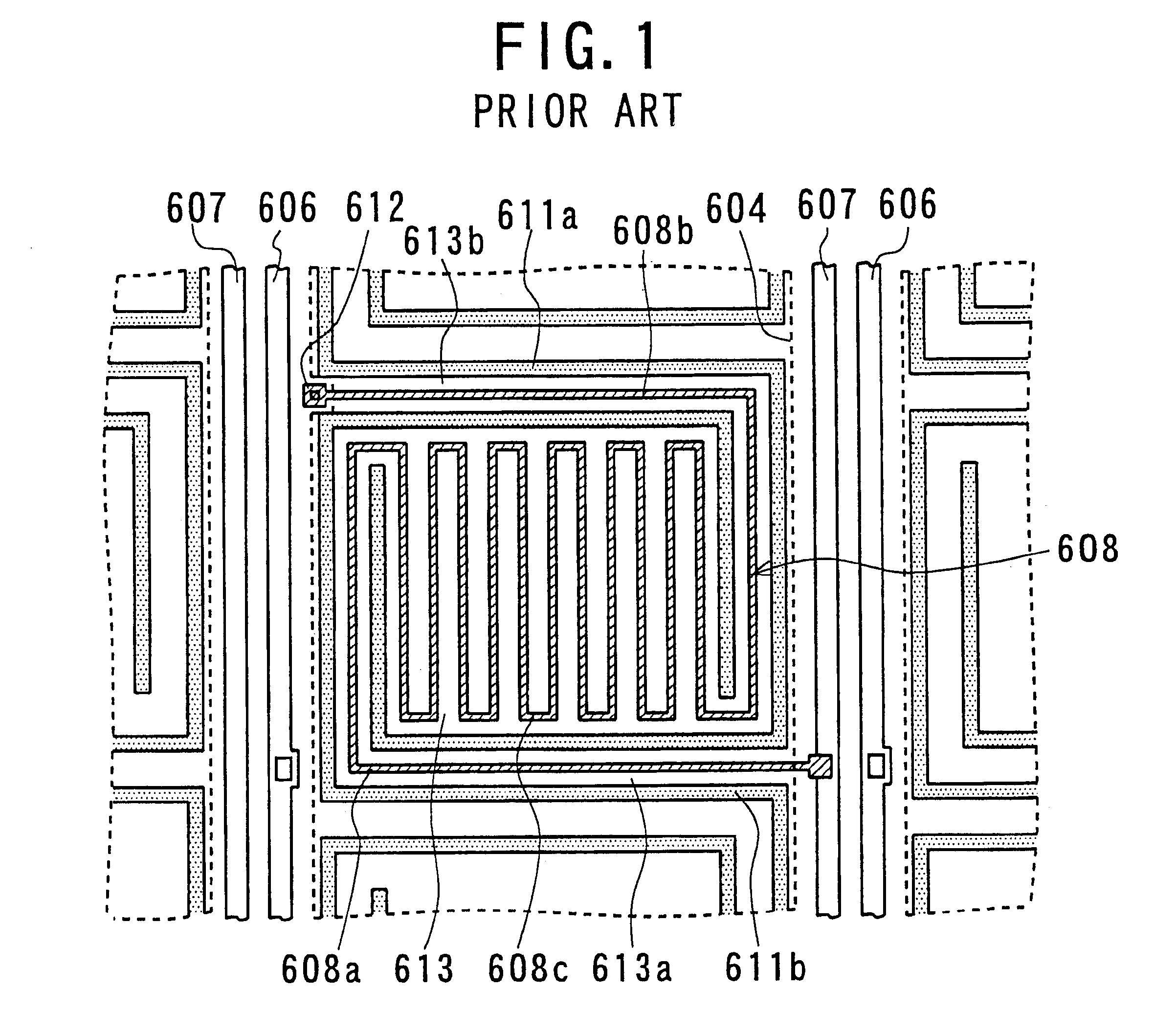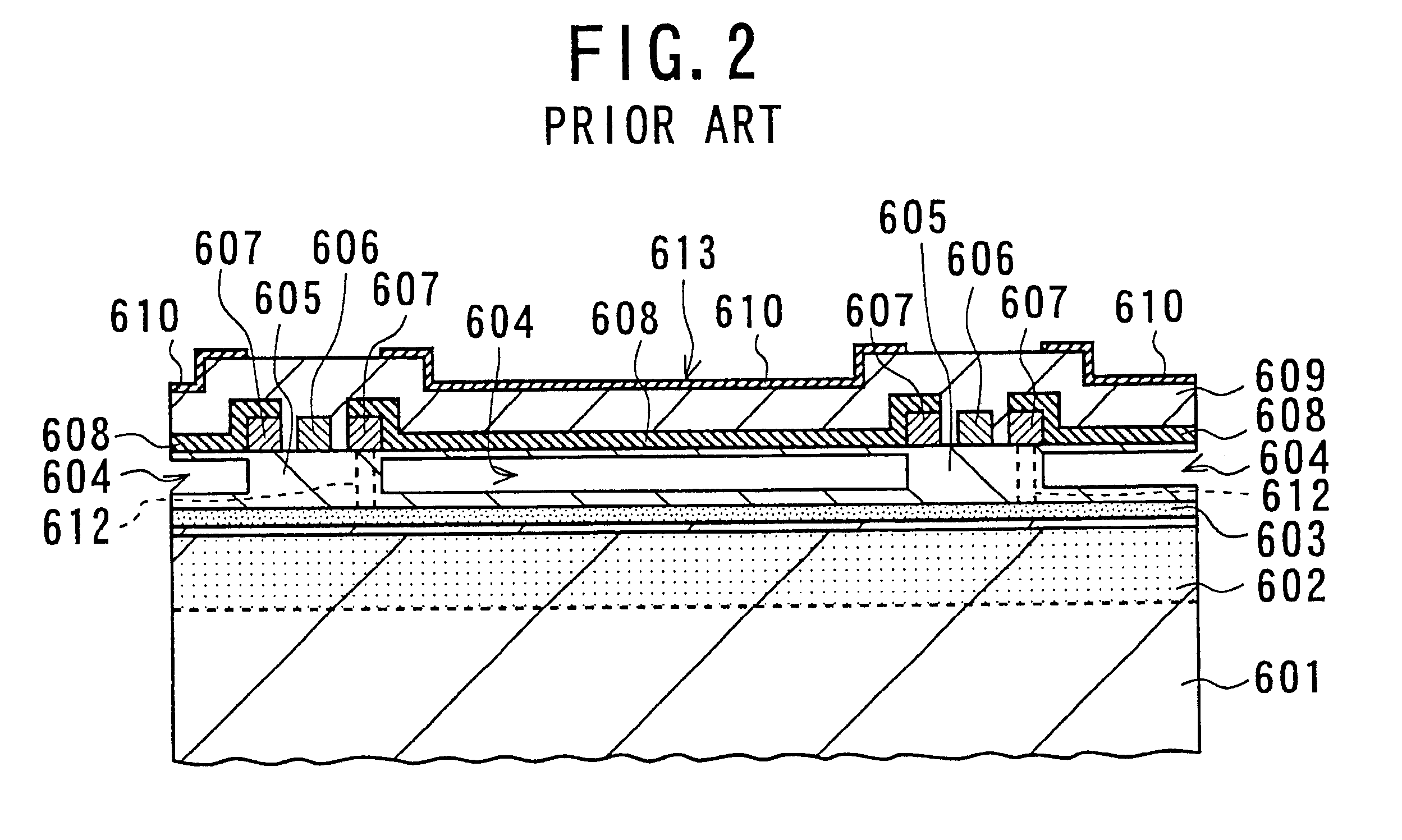Semiconductor device with electric converter element
a technology of electric converter and semiconductor, which is applied in the direction of semiconductor/solid-state device details, optical radiation measurement, instruments, etc., can solve the problems of lowering the fabrication yield, unsatisfactory thermal shielding or blocking capability of the diaphragm 613, and unsatisfactory sensitivity of the bolometer 608
- Summary
- Abstract
- Description
- Claims
- Application Information
AI Technical Summary
Problems solved by technology
Method used
Image
Examples
first embodiment
FIG. 3 schematically shows the configuration of a semiconductor device according to the present invention, which serves as an IR micro-sensor device.
As shown in FIG. 3, this semiconductor device includes a plurality of IR receiving sections or pixels arranged in a matrix array. Each of the IR receiving sections has a diaphragm 108 and thermoelectric converter (i.e., IR bolometer) 110.
An integrated circuit 102 is formed on a main surface of a single-crystal silicon (Si) substrate 101. The integrated circuit 102 includes a plurality of MOSFETs M formed in corresponding device regions, which are electrically isolated from one another by an isolation oxide 102a. Each of the MOSFETs M is formed by a pair of source / drain regions 102b, a gate oxide layer 102c, and a gate electrode 102d. The integrated circuit 102 is covered with an interlayer dielectric layer 103. Here, the layer 103 is made of SiO.sub.2.
A dielectric layer 105, which is made of SiO.sub.2, is formed on the interlayer dielec...
second embodiment
FIGS. 8, 9, and 10 show a semiconductor device serving as an IR micro-sensor device according to a second embodiment of the present invention.
This device according to the second embodiment has the same configuration as the first embodiment except that each of the bolometers 110 is made of the same material (i.e., titanium silicide) as the leg wiring lines 109a and 109b. Therefore, there is an additional advantage that the fabrication cost is lowered.
third embodiment
FIGS. 11 and 13 show a semiconductor device serving as an IR micro-sensor device according to a third embodiment of the present invention.
This device according to the third embodiment has the same configuration as the first embodiment except that the dielectric layer 201 is formed to cover central parts of the diaphragms 108. To cover the exposed parts of the diaphragms 108, a dielectric layer 202b is additionally formed.
Even if the tensile stress of the dielectric layer 201 is excessively strong, the warp of the diaphragm 108 may be adjusted by decreasing the area (i.e., size) and / or shape of the dielectric layer 201 it was found from the inventor's test that the after image problem was able to be prevented from occurring by adjusting the area or size of the dielectric layer 201 to be equal to 3 / 4 of the whole area of the diaphragm 108 or less. An example is shown in FIG. 14.
PUM
 Login to View More
Login to View More Abstract
Description
Claims
Application Information
 Login to View More
Login to View More - R&D
- Intellectual Property
- Life Sciences
- Materials
- Tech Scout
- Unparalleled Data Quality
- Higher Quality Content
- 60% Fewer Hallucinations
Browse by: Latest US Patents, China's latest patents, Technical Efficacy Thesaurus, Application Domain, Technology Topic, Popular Technical Reports.
© 2025 PatSnap. All rights reserved.Legal|Privacy policy|Modern Slavery Act Transparency Statement|Sitemap|About US| Contact US: help@patsnap.com



